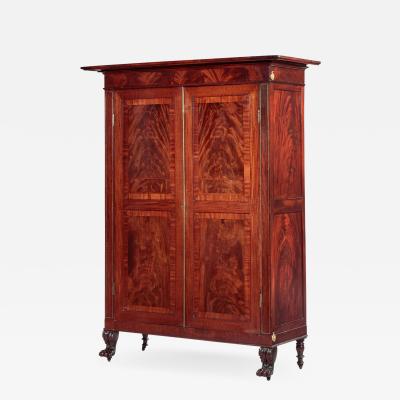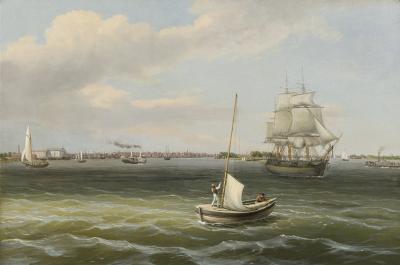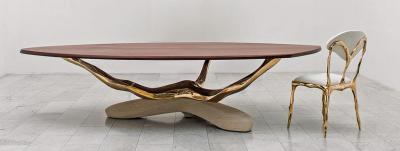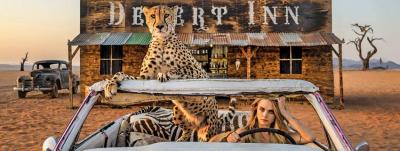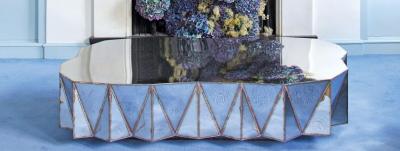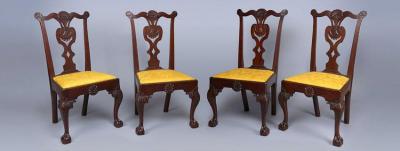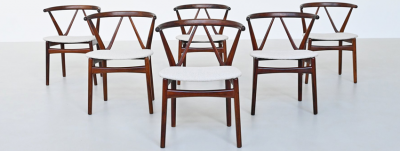The Idle Hour: The Irvine Museum Collection at the University of California, Irvine
California’s image as a bucolic paradise manifested itself in the paintings made by artists who traveled there shortly after it attained statehood in 1850. Enchanted by the plentiful sunlight and the variety of lush, sweeping landscapes, the late nineteenth- and early twentieth-century artists who worked out of doors in the plein air Impressionist style painted scenes that were more than simply representations. Their works communicated California as the expression of an idyllic lifestyle.
As the American public lifted the “California lifestyle” to an almost mythic ideal, people immigrated in droves. The California Impressionists recorded these new inhabitants and their leisure activities in their paintings. The Idle Hour: The Irvine Museum Collection at the University of California, Irvine, on display at Casa Romantica Cultural Center and Gardens in San Clemente, California, presents a variety of interpretations of quietude through California landscapes and figurative works.1 The Center’s sunlit courtyard, romantic salon, and captivating vistas overlooking the Pacific Ocean and San Clemente Pier are evocative of the ideal so prized by the California Impressionists. The following images are a selection of the works on view at Casa Romantica.
 |
 |
John Hubbard Rich (1877–1955), The Idle Hour, 1917. Oil on canvas, 14 x 14 inches. The Irvine Museum Collection. |
The Idle Hour portrays a young woman, strikingly ornamented and cooled by a fan. Her lilting pose and mellow demeanor give the impression of time standing still. Like all of John Hubbard Rich’s works, the painting is characterized by its elegance and resemblance to the Boston school of American Impressionism, with its vibrantly Impressionistic color and conservative approach toward the figure. Rich is primarily identified with his portraits. As a student at the School of the Museum of Fine Arts in Boston, the Massachusetts native was granted a Paige Travelling Scholarship to study art in Europe. He also trained at the Art Students League in New York. He received numerous competition awards for his art throughout his career, most notably silver medals from the California Art Club, the San Diego Exhibition, and the Panama-California Exhibition. Rich held positions at the University of Southern California, the Otis Institute, and the Groton School, and he founded the School for Illustrating and Painting in Los Angeles.
 |
 |
Meta Cressey (1882–1964), Under the Pepper Tree, ca. 1927. Oil on canvas, 35½ x 40½ inches. Joan Irvine Smith Fine Arts, Inc. |
Classified as a California Progressive painter, Ohio-born Meta Cressey developed a distinct style by diverging from the Tonal (typified by landscape, mood, formalism, and cool colors) techniques she studied under the tutelage of Robert Henri in Spain, and imbuing her works with brilliant colors and light. Although she incorporated Impressionist techniques, Cressey adopted a sharper, more detailed, and more vibrant approach to her artwork than more traditional artists, treating foreground and background with the same intensity.
Under the Pepper Tree is noted for its visual nod to the idea of affluence in the Gilded Age. This piece is thought to have been inspired by her garden in the Hollywood Hills, and is believed to have been showcased at the Eighth Annual Exhibition of Painters and Sculptors, hosted at the Los Angeles Museum of History, Science, and Art.
 |
 |
Colin Campbell Cooper (1856–1937), The Rustic Gate, ca. 1918. Oil on canvas, 46 x 36 inches. The Irvine Museum Collection. |
Colin Campbell Cooper was born into a family of artists. He is recorded as attributing his interests and skills to his parents. He began his career with Thomas Eakins at the Pennsylvania Academy of Fine Arts, and later painted throughout Europe. Afterwards, he taught at the Drexel Institute and served as dean of the Santa Barbara School for the Arts. Cooper’s works are associated with various artistic movements and styles. He was heralded as both a New York Impressionist and a California Impressionist, and had ties to the American Orientalist movement. An adept draftsman, he is predominantly associated with his renditions of American skyscrapers, but all of his subject matter captures masterfully the appearance of light moving across planes.
 |
 |
— Casa Romantica Executive Director, Berenika Palys |
 |
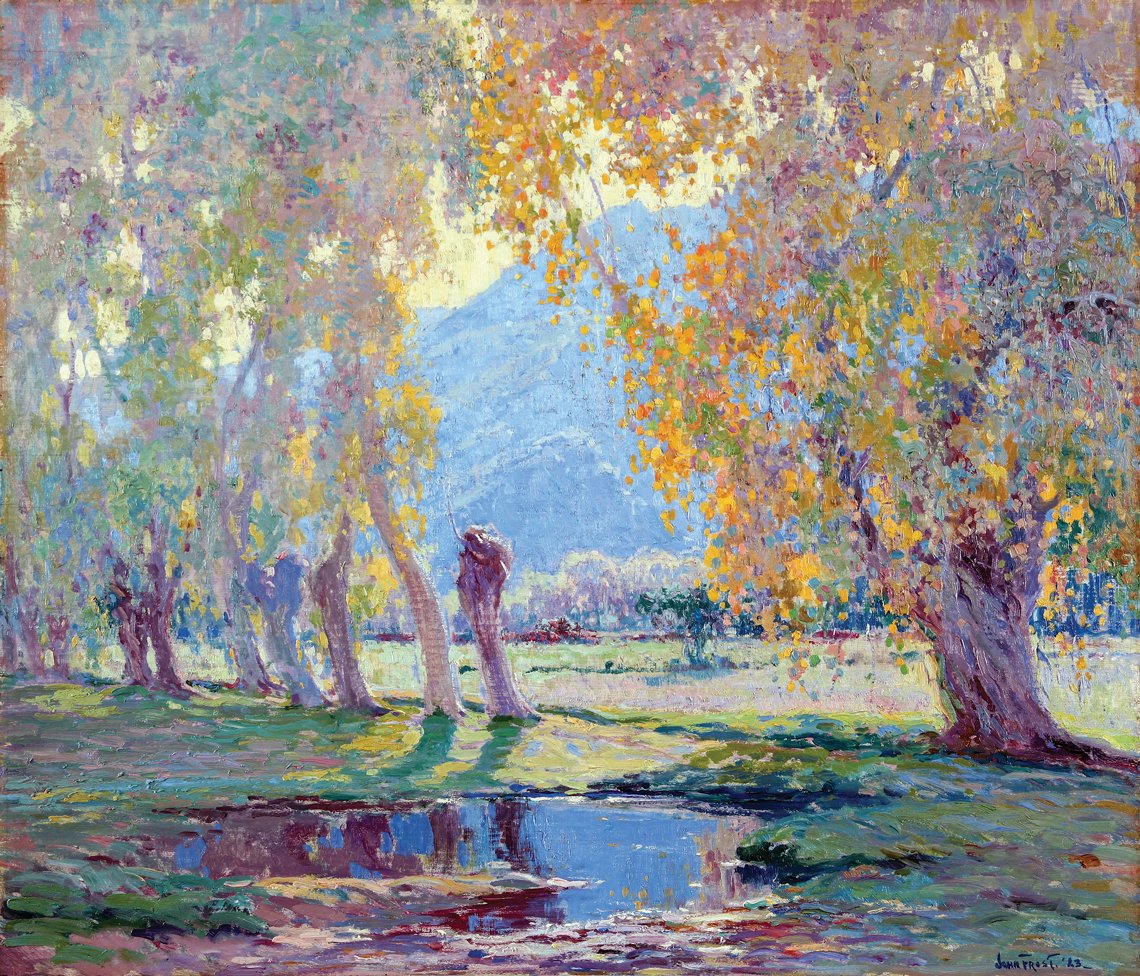 |
John Frost (1890–1937), The Pool at Sundown, 1923. Oil on canvas, 24 x 28 inches. Private Collection, courtesy The Irvine Museum. |
The Pool at Sundown has appeared in numerous traveling exhibitions celebrating California art. John Frost was the son of prominent illustrator Arthur B. Frost. The Pennsylvanian artist studied painting in Paris and Giverny, returning to America in 1916 after battling tuberculosis. Here, he used his classical art training to replicate California and Arizona desert vistas. Like many California Impressionists, John Frost aimed to capture a specific moment when natural light transformed the landscape, in contrast to French Impressionists, who sought to capture a moment of societal interaction. Frost’s works had a wide following in the 1920s and 1930s, in both California and his home state of Pennsylvania, but fell into obscurity with the ascendance of Modernism in America. His paintings gained popularity once again in the early 1990s, with the founding of the Irvine Museum by Joan Irvine Smith, who sought to promote artwork from the era of California Impressionism.
 |
 |
Edouard Vysekal (1890–1939), Joy, 1917. Oil on canvas, 46 x 35 inches. The Irvine Museum Collection at U.C.I. |
Vysekal studied and taught at the Art Institute of Chicago after beginning his education in his native Prague. He originally ventured to California to work on a mural commission for the Hotel Barbara Worth in El Centro, though he made his home in Los Angeles. The longer Vysekal resided in California, the more avant-garde his style became. Vysekal’s works fuse elements of Postimpressionism, Synchronism, and Cubism, as he studied under Stanton MacDonald-Wright, who cofounded Synchronism with Morgan Russell. Joy, depicting a girl with golden hair on a swing in the foreground and two companions in the background, fits this blend of genres. The simple structure of the girls evokes Paul Cezanne’s style, while the detailed patterns in the background may be classified Postimpressionistic. Joy retains its overall status as an Impressionistic piece due to its iridescent light and color. This blend of styles was common in the Los Angeles art community in the 1910s and 1920s. The cavalier nature of the characters in the painting is thought to endorse the concept of the California dream, which is found not only in Impressionistic artwork, but also in Modernist artwork in both figure paintings and landscapes.
 |
 |
Granville Redmond, Untitled, Coastal Scene at Sunset, (n.d.). Oil on canvas, 16 x 20 inches. The James Irvine Swinden Trust. |
The Pennsylvania-born Granville Redmond contracted scarlet fever as a youth and lost hearing and speaking abilities as a result. Undeterred, he distinguished himself as a scholar and as an artist, having been awarded a stipend from the Institution for the Deaf, Dumb, and Blind to attend the Académie Julian in Paris. In 1908, he moved to Northern California, where he garnered a reputation as one of San Francisco’s preeminent painters. He also trained as a pantomimist and established a professional relationship with Charlie Chaplin, acting in small roles in his silent movies. Redmond earned a painting studio on Chaplin’s movie lot, “paying” Chaplin for the space with paintings. As one of Southern California’s earliest Impressionists, Redmond produced works that were somewhat atypical of this period and more representative of Tonalism. He painted scenes traversing the California coast from Laguna Beach and Catalina Island to Monterey. Redmond won the W. E. Brown Gold Medal from the California School of Design in 1891, a medal from the Louisiana Purchase Exposition, St. Louis in 1904, and a Silver Medal from the Alaska-Yukon-Pacific Exposition in Seattle in 1909. Untitled, Coastal Scene at Sunset is quintessential of the Southern California lifestyle and its mythical stretches of Pacific coast at the Golden Hour. The sun setting over the water gives closure to the perfect California evening.
 |
 |
Percy Percy Gray (1869–1952), Oak Tree and Poppies (n.d.). Watercolor, 12 x 15 inches. The James Irvine Swinden Family Collection. |
Oak Tree and Poppies, by Henry Percy Gray, depicts the quiet afternoon on a hot California day. The vista demands pause and offers respite. Henry Percy Gray had a family lineage comprised of twelve artists and numerous writers. A San Franciscan, he studied at the San Francisco School of Design and acted as a sketch artist for the San Francisco Call. He also worked for the New York Journal and the Examiner. While in New York, he also studied under William Merritt Chase at the Art Students League. Gray was well versed in oil paintings and etchings, though he is distinguished for his watercolors. His style is reflective of his British heritage, in his use of transparent washes in his watercolor paintings. The Impressionistic qualities of his works derive from his desire to focus on the atmosphere of the scene, rather than on the scene itself. Gray painted landscapes in Northern California, Arizona, and Oregon, and often hosted painting trips to Marin and Sonoma counties. Twenty portraits of Native Americans are among his portrait work. The artist drafted sketches onsite and completed his works in the studio connected to his historic home (formerly owned by Civil War General William T. Sherman).
 |
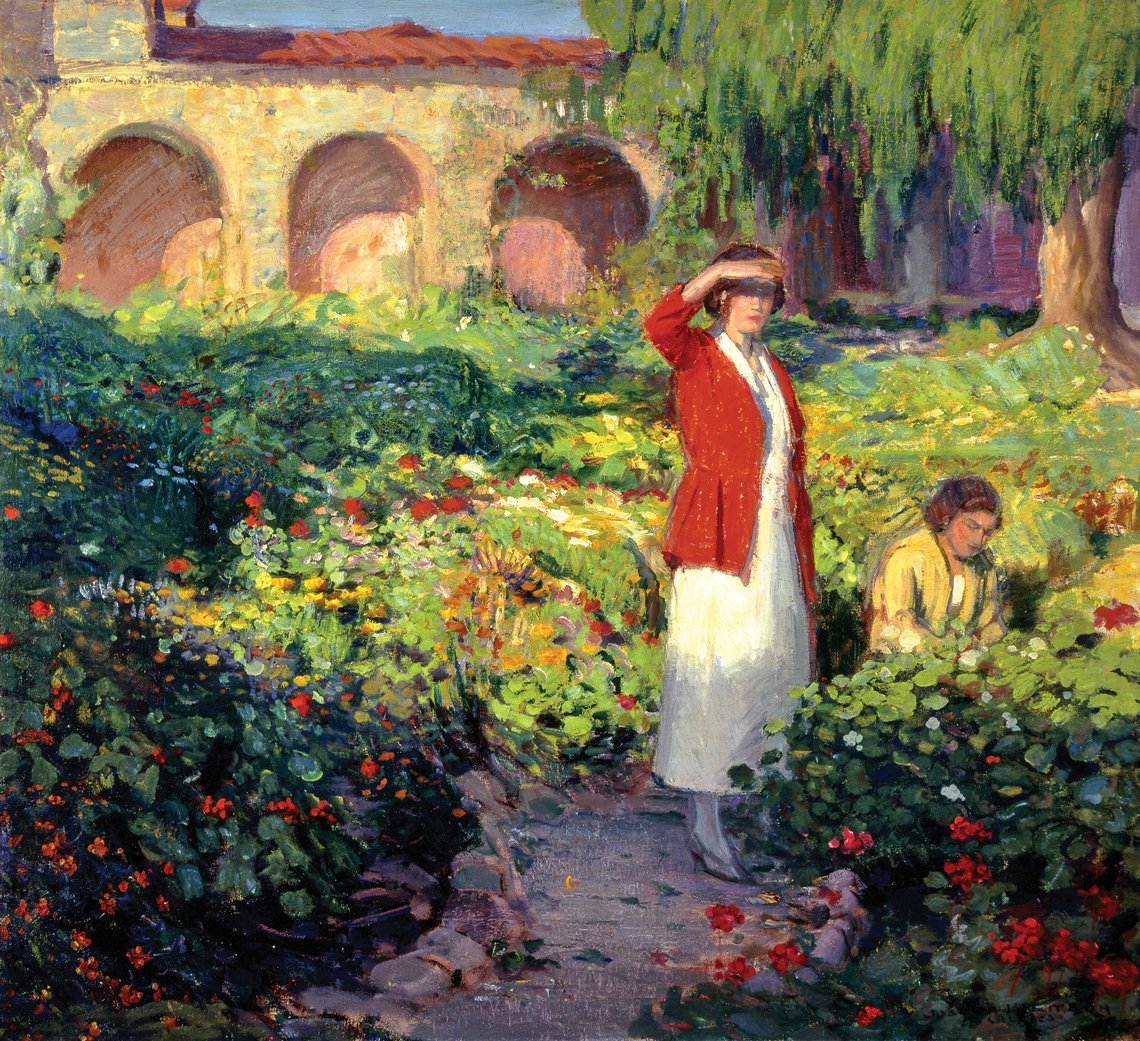 |
Joseph Kleitsch (1882–1963), Red and Green, 1923. Oil on canvas, 36 x 40 inches. The Irvine Museum Collection. |
Joseph Kleitsch immigrated to the United States from Hungary, where he commenced his career as a portraitist. He received a well-rounded artistic education, attending schools in Budapest, Munich, and Paris. Though Kleitsch painted Northern American landscapes in Mexico City, Chicago, and Kansas, he was most highly revered for his work as a California plein-air painter and his depictions of early twentieth-century Laguna Beach. Red and Green constitutes part of Kleitsch’s oeuvre of sketches portraying Mission San Juan Capistrano. As with several of his other figurative paintings, Red and Green employs bright colors and lighting contrasts. The subject of the painting is Kleitsch’s wife Edna, in the iconic red jacket that he often painted her in, with a young Hispanic girl.
 |
The Idle Hour: The Irvine Museum Collection at the University of California, Irvine, is on view from November 9, 2018, through March 10, 2019, at Casa Romantica Cultural Center and Gardens in San Clemente, Calif. Casa Romantica Cultural Center and Gardens is the historic home of the founder of the city of San Clemente (casaromantica.org).
 |
Berenika D. Palys is the Executive Director of Casa Romantica Cultural Center and Gardens in San Clemente, Calif., and the curator of The Idle Hour.
 |
1. The Irvine Museum Collection was founded in 1993 by the philanthropist and arts patron Joan Irvine Smith to house her display of California regional art. The collection will eventually find a home on the University of California, Irvine campus, where a major center is envisioned that focuses on the study and education of California art.

















